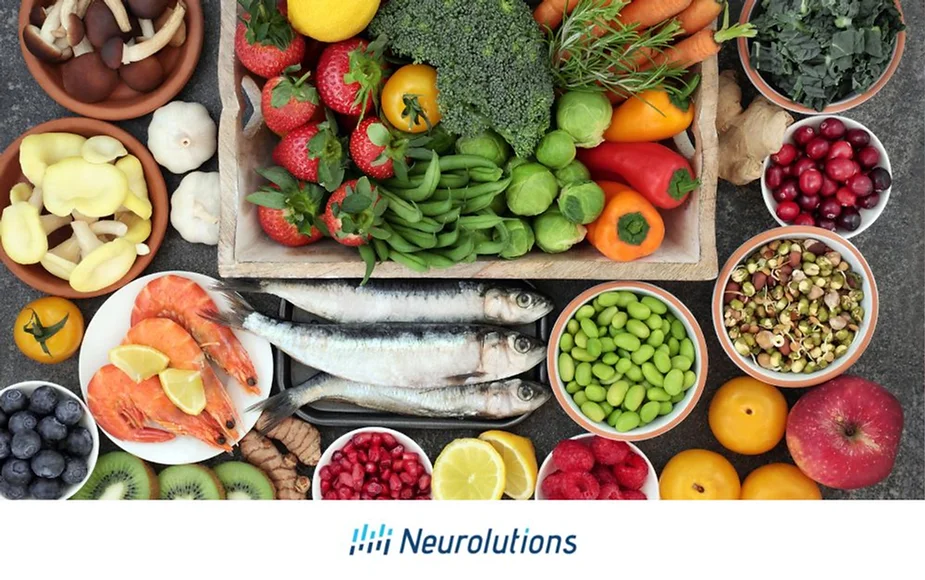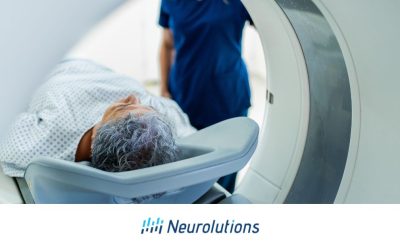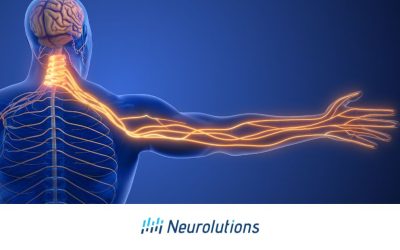There are many benefits to eating healthy. A well-balanced diet plan provides proper fuel and energy to keep you active, manages your weight, boosts immunity, contributes to strong bones, and can lower your risk of diabetes, heart disease, stroke, certain cancers, and other diet-related illnesses.
While there is no one-size-fits-all post-stroke diet and nutrition plan, there are targeted consumption ranges and guidelines published by the American Heart Association (AHA) and American Stroke Association (ASA) for both stroke prevention as well as stroke recovery. (1)
This article provides you and your family members with insight and resources for post-stroke nutrition and how it improves stroke recovery.
Important note: It should be noted early on that no food should be consumed if you have a probable or known allergic reaction or interaction with medication or a specific medical condition. This blog is intended as general advice based on the best available literature related to stroke and heart health. Statements are not intended to replace individualized guidance from your physician or nutritionist.
It also should be noted that the scope of this article is not intended to report on the health benefits of every known food. If there is a specific food group or ingredient that you have a particular interest in learning more about, it is recommended that you do your own research on that food and later discuss it with your healthcare provider or nutritionist.
How is a Stroke Related to Diet?
In order to better understand what a healthy post-stroke diet looks like, it is first important to discuss how a stroke event can be related to diet.
The Link Between Heart Health and Stroke
Generally speaking, heart and cerebrovascular health (CVH) refers to the condition of structures and functions of blood flow to, from, and within the brain. CVH and heart disease are well known to correlate with the risk for developing stroke. Strokes are often caused by interruptions in blood flow in the brain caused by clots or bleeding of blood vessels.
There are many modifiable and non-modifiable risk factors for heart disease and stroke. Diet, or the foods that we eat, are a modifiable risk factor, meaning adjustments and behavioral changes that you make can directly influence your health outcomes for better or for worse.
To no surprise, there are known foods that change the risk of stroke. The following table lists foods or diets found to influence increasing stroke risk, along with possible reasons why.
|
Increased Risk of Heart Disease and Stroke |
Proposed Reason(s) |
|
Processed foods and spreads (shortening, margarine) |
High in trans fats which raise LDL (bad cholesterol) and lower HDL (good cholesterol) |
|
Fried foods |
High in trans fats which raise LDL (bad cholesterol) and lower HDL (good cholesterol) |
|
Prepackaged foods and snacks |
High in trans fats which raise LDL (bad cholesterol) and lower HDL (good cholesterol) |
|
Cookies, cakes, and donuts |
High in trans fats and partially hydrogenated oils which raise LDL (bad cholesterol) and lower HDL (good cholesterol) |
|
Soda pop (regular and diet) |
|
|
Processed meats |
Preservatives (e.g. sodium nitrite, nitrate) may damage blood vessels |
|
Drinking over the safe limit of alcohol |
May raise blood pressure and trigger heart conditions known to cause a stroke |
Just as eating “good” foods a few times over a few days will not create a profound positive impact on your health in the short term, eating a few foods on the “bad” list every now and then is not expected to cause substantial detriment. However, if an abundance of “bad foods” are overconsumed over a period of time, damage to your health is highly likely.
Robust, low-biased studies and statistical trends help guide nutritional guidelines published by multiple associations related to health and nutrition. There are several well-known food groups or types of food that remain controversial because of conflicting information from both old and new studies.
One of these controversial categories is saturated fats. The American Heart Association has summarized in their 2022 update that evidence for saturated fatty acid intake as a risk or protective factor for total and CVD mortality remains controversial. However, data and meta-analyses of prospective cohort studies show that higher intakes of total fat, polyunsaturated fatty acids, and monounsaturated fatty acids are associated with lower death rates.
Red meat is another category of food that has fallen under a bad reputation, but a lot more needs to be understood. In the journal Stroke, an article showed women who consumed large servings of red meat regularly had a 42 percent higher incidence of stroke. (2) However, a new October 2022 study with weak evidence of an association between unprocessed red meat consumption and stroke. (3)
What Does a Healthy Post-Stroke Diet Look Like?
While recovering, you may be experiencing several symptoms related to stroke that could have an impact on your relationship with food, such as fatigue and energy loss, sleep disruptions, weight gain or loss, chewing or swallowing problems, nausea, and reduced muscle strength and coordination.
While reviewing the list below, keep in mind that eating one of these food groupings a few times will not be substantial enough to impact short and long-term health to lower the risk for recurrent stroke and optimize your performance. that it is the combination of both portion control balanced diet over time
|
Decreased Risk |
Proposed Reason(s) |
|
Fruits and Veggies |
Great source of vitamins and minerals High in fiber Protective agents against diseases, including stroke |
|
Whole Grains |
Provides fiber, nutrients, controls cholesterol levels, and known to lower risk for heart disease and other conditions |
|
Salmon and Fish Oils |
Polyunsaturated and Omega-3s to decrease inflammation, reduce plaque, prevent blood clots, reduce triglycerides, raise HDL (good cholesterol) |
|
Berries |
High in antioxidants and promotes healthy gut |
|
Whole Nuts |
High in “good fats” and dietary protein Some are high in amino acid arginine, which keeps blood vessels healthy |
|
Olive Oil |
Apolipoprotein is thought to prevent the build-up of fats, cholesterol and other substances on the artery walls |
For detailed information on American Heart Association targets and consumption ranges, refer to the 5-1 AHA Dietary Targets and Healthy Diet Score for Defining CVH (1)
How Can You Avoid Foods That Can Cause More Strokes?
Eating well can help lower your risk of having another stroke.
Here are a few tips to help you make good food choices. These tips also include foods to avoid after a stroke.
- Choose lean meats, such as chicken and turkey without skin or deep fried and extra lean ground meat or cuts of meat. Avoid overconsumption of processed meats known to carry preservatives, salt, and extra fat.
- Choose fish regarded as nutritious and not known to have high levels of mercury contamination. Some of the “best fish” containing Omega-3 include salmon, albacore tuna, sardines, and herring. Avoid eating fish cooked in the deep fryer.
- Choose fresh or frozen vegetables and fruit in their pure form. Avoid canned vegetables and fruit without added preservatives or bagged that do not have added sodium, sugar, or high-calorie sauces and syrups.
- Choose fiber-rich whole grains (bread, pasta, rice, oats, quinoa). Avoid processed and refined grains (white breads, white pastas, and certain baked goods).
- Choose low-fat dairy. Avoid full-fat dairy unless you are on a specific plan.
- Avoid high-salt foods after a stroke. Prepare food without or with very little added salt. Check nutrition labels and select foods that contain 140 mg or less of sodium per serving.
- Limit foods that contain sugar, corn syrups, fructose, and other sweeteners found in soda pop, candy, juices, sweet coffee drinks, ice cream, and baked goods
- Cut down on alcohol or cut it out completely. For more information, visit this resource: How to Reduce Your Alcohol Consumption
Are Certain Diets Associated with Lower Risk of Stroke?
There are far too many different types of diets types to cover in one article (i.e. high-protein, high-carb, ketogenic, vegetarian, etc.), but two diets- Mediterranean Diet and Paleo Diet- are briefly discussed below as they have gained popularity among followers and in research related to health benefits.
Mediterranean Diet
Prevalent countries surrounding the Mediterranean Sea, the Mediterranean Diet emphasizes a “heart-healthy” plan. Eating plans include the consumption of a large number of vegetables, whole grains, beans, nuts, lentils, and olive oil as a source of healthy fat. It also includes a moderate amount of consumption of fish high in omega-3s.
The diet is believed to have a lot of health benefits and is delivered from one of five areas in the world regarded as the Blue Zone (i.e. areas of the world where people live the longest lives).
A study published in Stroke (2018) concluded that greater adherence to a Mediterranean diet was associated with a lower risk for stroke (subject demographic: UK white population). (4)
Because of correlations between stroke and medical conditions like diabetes, high blood pressure, high cholesterol, and cardiovascular disease, the Mediterranean diet may be protective.
Paleo Diet
The Paleo promotes a Stone Age eating plan similar to our ancestors that were hunters and gathers. This diet recommends eating foods of the land and sea, including fish, lean meats, eggs, nuts, fruits, and vegetables. Processed foods, sugar, salt, alcohol, dairy, and grains are avoided.
There have been a lot of debates over the years and conflicting information in research studies in regard to whether or not the Paleo diet is helpful or harmful for heart and gut health.
For example, exclusions of whole grains as part of the Paleo diet are contested by the American Heart Association. The AHA states that whole grains reduce the risk of stroke, lower cholesterol, type 2 diabetes, and obesity. (5)
Nevertheless, there are recent systematic reviews and large clinical trials that have concluded benefits to Paleo on factors that may influence the occurrence of stroke (e.g. improvements in body weight, cardiovascular disease, type 2 diabetes, metabolic syndrome, biomarkers linked to obesity). (6, 7)
Meal Preparation Tips for Stroke Survivors
“What’s for Dinner?”
More often than not, individuals residing in the same household end up eating the same foods! When changes need to be made within the stroke survivor’s meal plan, it naturally influences what is served on the kitchen table for everyone.
The American Stroke Association has put out a helpful resource for stroke survivors and their care providers to assist with meal preparation.
Their free cookbook provides information on
- How to eat well after a stroke
- Tips for meal preparation for stroke survivors
- Ideas for simple snacks and side dishes
- Healthy and tasty recipes
For more information, visit the link provided: Cookbook for Stroke Survivors and their Families
While opening your cookbook to find healthy recipes never goes out of style, pop culture has paved the way for certain social media sites to find free meal ideas that may align with a balanced diet for stroke recovery. Check Pinterest, TikTok, and Instagram to follow influencers that share recipes and ideas.
Cooking Tips for Stroke Survivors
A well-designed nutrition plan also encompasses strategies to support healthy eating. Cooking and meal preparation tips for stroke survivors may include:
- Drink plenty of water throughout the day. Eight glasses is the recommended minimum. Water is helpful for brain and body health and also curbs overeating.
- Plan your meals for the week and stick to it as much as possible. Meal planning with family members is important to ensure everyone is in alignment with meal planning and nutrition goals.
- Check the ingredients and nutrition labels of packaged items. Know the ingredients in the foods you eat in restaurants whenever possible.
- For easier preparation, consider purchasing foods that are already chopped up or sliced.
- Double the recipe so you have leftovers. Leftovers can always be frozen if you cannot get to them immediately. This can conserve energy and sometimes be budget-friendly.
- There are many adaptive options for cooking and preparing food that is available for stroke survivors that may have limitations with strength, manipulation, balance, and energy level. Link our article that Kelly wrote.
- When grocery shopping, shop the perimeter of the store to find fresh and whole foods. It is more common for processed foods to be in the aisles in the middle of the store.
- Avoid buying foods known to tempt you too much if these foods are considered “off limits” because of the risk it could place on your health.
Nutrition Management: A Part of Stroke Prevention and Stroke Recovery Plan
In a joint partnership, healthcare providers, patients, and families must choose an individual’s strategy for post-stroke nutrition based on a combination of personal food preferences, known medical considerations, best-available recommendations supported by evidence, and goals.
After a plan is set, it becomes up to the individual and their family to adhere to the meal plan. Forming new habits for eating is not always easy. If you fall off the wagon a few times, that’s normal and okay. Some studies have shown that it takes an average of 66 days to form a new habit- not 21! (8)
For more information, consult a nutritionist or your physician to customize a meal plan for you to support your goals for stroke recovery and prevention that are sensible and practical to follow so you can optimize your health.
- References
- Heart Disease and Stroke Statistics-2022 Update: A Report From the American Heart Association (Nutrition, Chapter 5)
- Kaluza J, Wolk A, Larsson SC. Red meat consumption and risk of stroke: a meta-analysis of prospective studies. Stroke. 2012 Oct;43(10):2556-60. doi: 10.1161/STROKEAHA.112.663286. Epub 2012 Jul 31. PMID: 22851546.
- Mullany EC, Parent MC, Serfes AL, Sorensen RJD, Aravkin AY, Zheng P, Murray CJL. Health effects associated with consumption of unprocessed red meat: a Burden of Proof study. Nat Med. 2022 Oct;28(10):2075-2082. doi: 10.1038/s41591-022-01968-z. Epub 2022 Oct 10. PMID: 36216940; PMCID: PMC9556326.
- https://www.ahajournals.org/doi/10.1161/STROKEAHA.117.020258
- https://www.heart.org/en/healthy-living/healthy-eating/eat-smart/nutrition-basics/whole-grains-refined-grains-and-dietary-fiber
- Frączek B, Pięta A, Burda A, Mazur-Kurach P, Tyrała F. Paleolithic Diet-Effect on the Health Status and Performance of Athletes? Nutrients. 2021 Mar 21;13(3):1019. doi: 10.3390/nu13031019. PMID: 33801152; PMCID: PMC8004139.
- Ghaedi E, Mohammadi M, Mohammadi H, Ramezani-Jolfaie N, Malekzadeh J, Hosseinzadeh M, Salehi-Abargouei A. Effects of a Paleolithic Diet on Cardiovascular Disease Risk Factors: A Systematic Review and Meta-Analysis of Randomized Controlled Trials. Adv Nutr. 2019 Jul 1;10(4):634-646. doi: 10.1093/advances/nmz007. Erratum in: Adv Nutr. 2020 Jul 1;11(4):1054. PMID: 31041449; PMCID: PMC6628854.
- Gardner B, Lally P, Wardle J. Making health habitual: the psychology of ‘habit-formation’ and general practice. Br J Gen Pract. 2012 Dec;62(605):664-6. doi: 10.3399/bjgp12X659466. PMID: 23211256; PMCID: PMC3505409.





